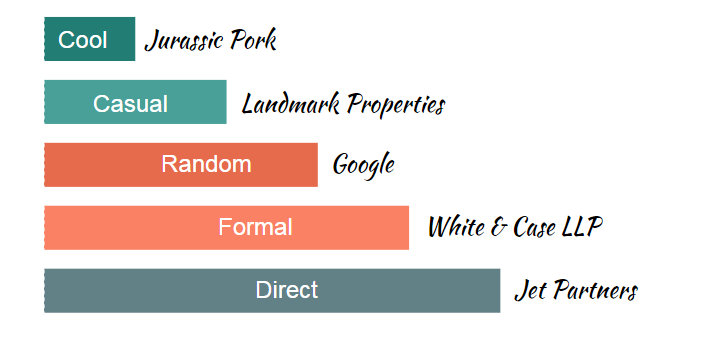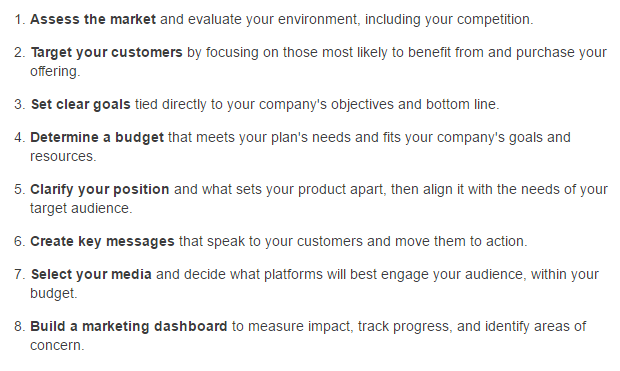You are lying on your bed, driving home after a long day, or just going through the usual morning routine when suddenly this million dollar idea strikes!
You feel like someone has injected bucket loads of steroids into your veins and all you can think about is how to start your own business based on this idea. Things couldn’t be moving fast enough for you. It is quite common for first time entrepreneurs to experience this burst of adrenaline, and if you’re one, you’re probably no exception.
So here’s a short how-to guide for you to learn how to get things done quickly and make the most of your entrepreneurial adrenaline rush.
1. How to Find a Business Name in Minutes
Quite a lot of people instinctively know what they will call their business while the remaining lot struggles for months to find that perfect name for their business.
Believe it or not, startup entrepreneurs have a tough time finding options for good business names, let alone deciding upon one.
On top of it, every business demands a different kind of name – so you can be cool or casual depending on the industry you are in. Here is a basic chart that explains the name categories:

But deciding on the type of name – cool, casual, direct or plain weird – is just the start. You also want to find an available domain name.
The fastest way to do all this is to use online tools to experiment with variations of names that you like and then make a list of domain names available along those lines. For example, DIY online store builder Spaces has a business name generator tool that looks up available domain names instantly, so you can find the perfect name for your business. It’s quite simple to use and all you have to do is enter relevant words; for instance, enter keywords like ‘burger’ and ‘burger online’ and you will get results like GoBurgerOnline, MyBurgerOnline, MyGourmetBurger, etc. which, wonders of wonders, are still available!
In less than 30 minutes, you can book a cool domain name for your business and thus overcome one of the biggest time-sucking decisions of your startup.
2. How to Create a Website in a Day
There are several options for creating websites, but if you are looking at a super quick, breathtaking website, try Wix. It is a freemium platform which means most of its basic features are free and so when you start out, you don’t have to pay anything. With intuitive, drag and drop templates, stock image galleries, secure hosting and built-in mobile optimization, you can quickly build a customized site within a few hours. Wix is incredibly easy to use and cost-effective but if you want to explore some options, check out this comparison of some site-building tools.
If you’re not the “comfortable-with-coding” or “dabbling-in-design” type of entrepreneur, you’d do better to go to an online design marketplace such as 99designs. You can simply type out a general idea or guidelines of the kind of site you prefer, and just sit back and watch as the proposals roll in. If you find a design you like and the designer is willing to do your site for a price you’re comfortable with, you should go ahead and just pick them to do it for you.
3. How to Hustle Branding & Design Decisions
Another bump on the road to entrepreneurship comes during branding your marketing collateral and designing your website or app. It is very difficult for first time founders to reach a conclusive decision, especially when it comes to finalizing their logo and brand colors.
This time can be curtailed by hustling your decision with this shortcut method:
- Remember that “less is more.” So stop quitting asking for more options from your designer. Don’t make them lose sleep over font size and color.
- Scale all your options to as many different sizes as possible.
- Get prints and look at the options objectively on various screens without bias or judgment.
By then, your intuition should kick in. If it doesn’t, sleep on it and decide the next day.
4. How to Carry Out Research Quickly & Effectively
Business research entails many things, from creating a customer snapshot with demographic targeting through cost, trends, and SWOT analysis. Whether you are looking at crowdfunding your business or seeking an investor, it is very important to do this research. A lot of entrepreneurs want to skip the research, thinking they have all the details in their head, but it is important to jot down as well as dig into all relevant facts and figures to form a good business strategy.
Here are some tools to help you get past this stage quickly.
- Persona: This app lets you create a persona or profile for your customers. It’s simple and fun too!
- BusinessBalls: You will find a lot of free templates on this site, but this link will take you to one of my favorites – a free template for SWOT analysis.
- MyBestSegments: Provides insights on trends, demographics, lifestyles, and buyer habits by geographical area.
5. How to Get a Full Scoop on Your Competitors
A plethora of competitor analysis tools are available on the internet. Clever use of these tools will allow you to get a full scoop on everything from website ranking to marketing methods. Since all (okay, most) marketing is now digital, you’d do well to monitor and stay on top of what kind of advertising, social media, email marketing and organic SEO the leaders in your industry are carrying out. A tool like SEMrush helps you find your competitors’ backlinks, the keywords they’re ranking for and the money they’re spending on search marketing and even the ad copy they’re using for PPC campaigns. It’s a bit expensive for startups but worth its subscription in gold!
6. How to Plan A Marketing Campaign in Just One Day
Usually planning a campaign, whether for direct or indirect marketing, takes weeks. However, you can accelerate the process by using these simple tips from MarketingProfs.
 7. Recreate the Feeding Frenzy on Social Media
7. Recreate the Feeding Frenzy on Social Media
As we all know, a “feeding frenzy” is an episode of frantic competition or rivalry to prey on something. The term is often associated with piranha and sharks. These days, it aptly describes the need to post on social media.
You can curate and create an unending stream of social media posts with the help of these tools:
Buffer: Schedule sharing of latest updates and curated content on all platforms where you have a presence. You can also generate images from text using a tool Buffer calls Pablo. Monday Motivation anyone?
CloudApp: Create animated GIFs with screenshots of your products.
PhotoGrid: Make photo collages and customize them the way you want.
Piktochart: Design coupons, banners, infographics and even presentations with simple drag and drop functionality.
Tracy Vides is a content marketer and social media consultant who works with small businesses and startups to increase their visibility. Her posts on marketing and entrepreneurship can be found on Steamfeed, Business2Community, Tech Cocktail, and elsewhere. Connect with her on Twitter @TracyVides for a tête-à-tête!
